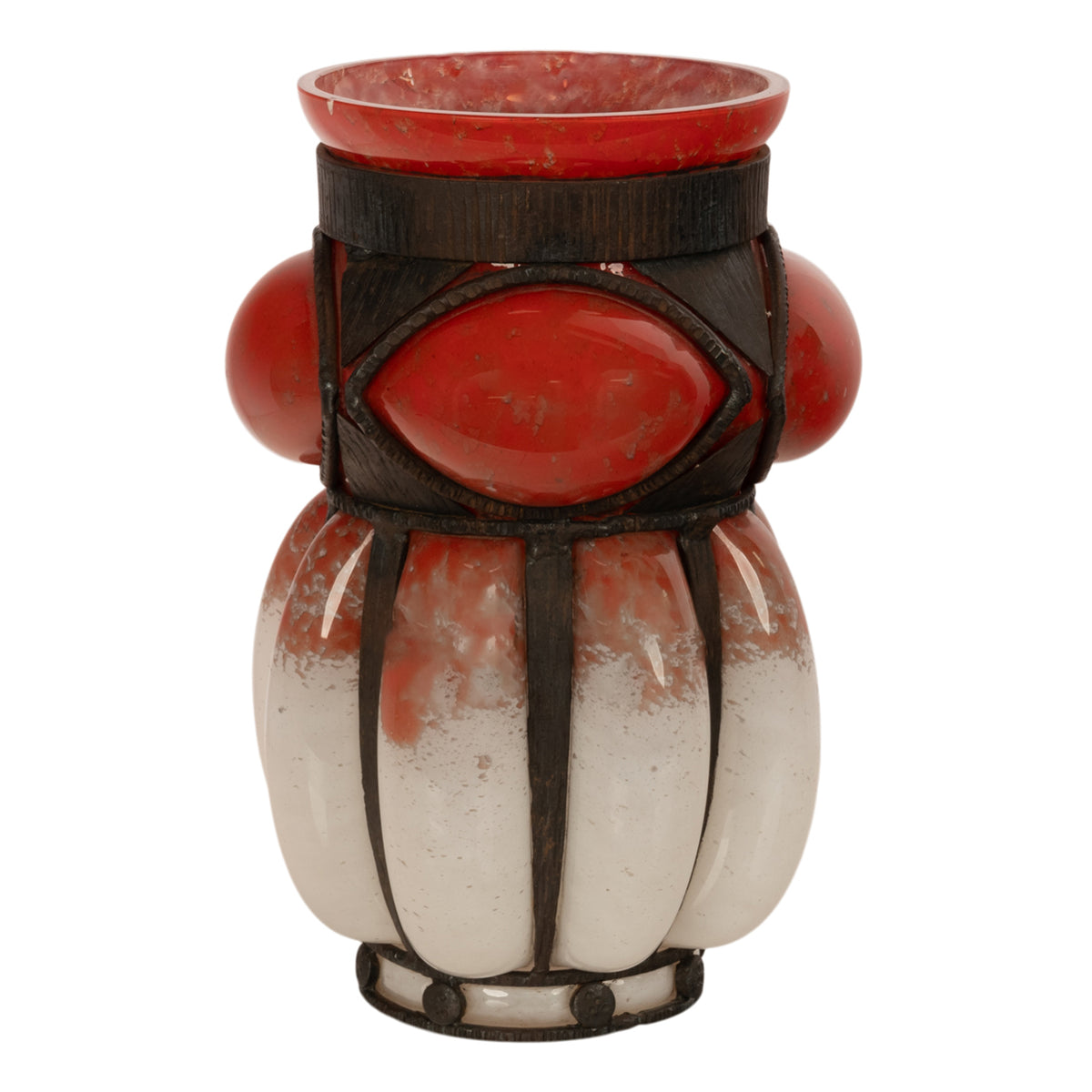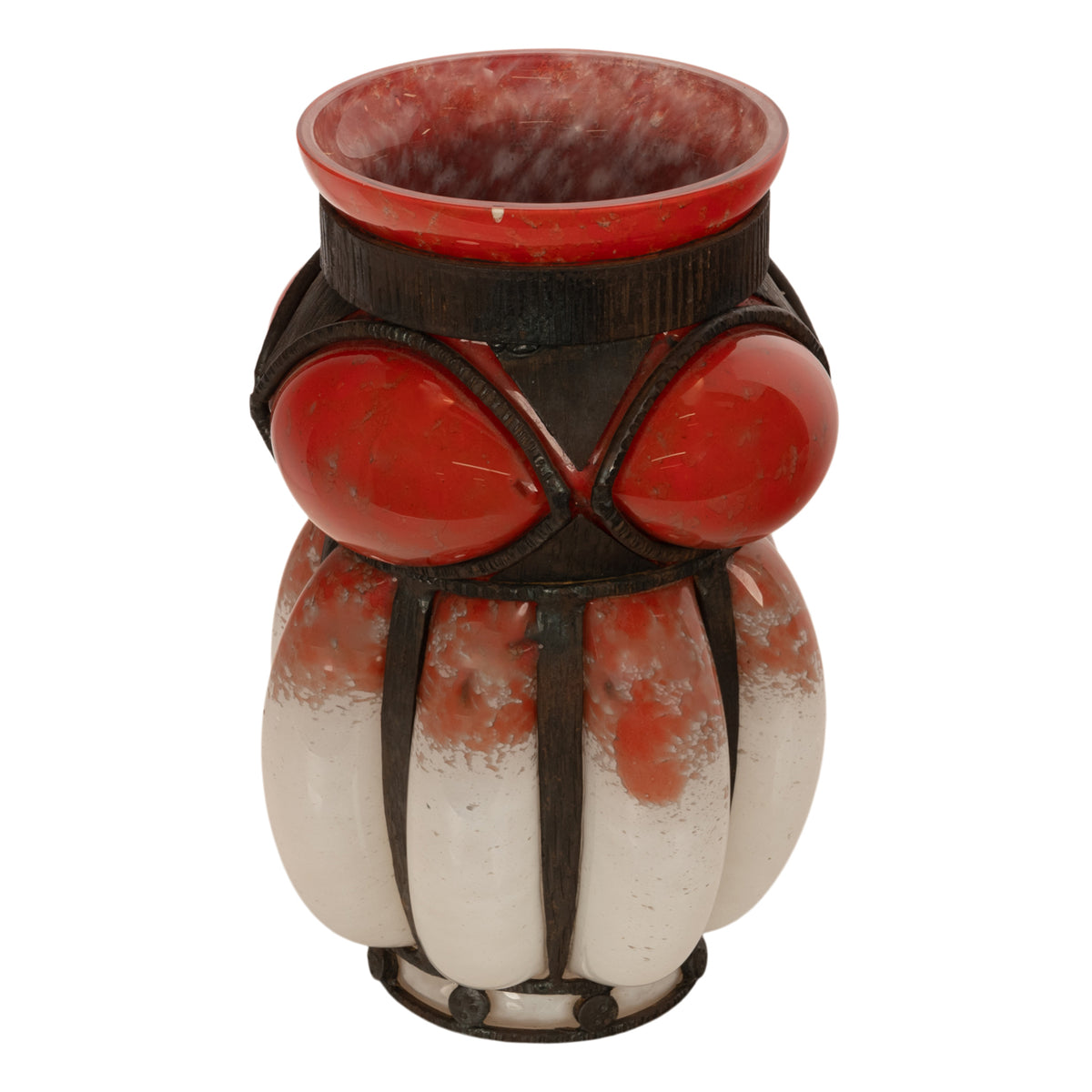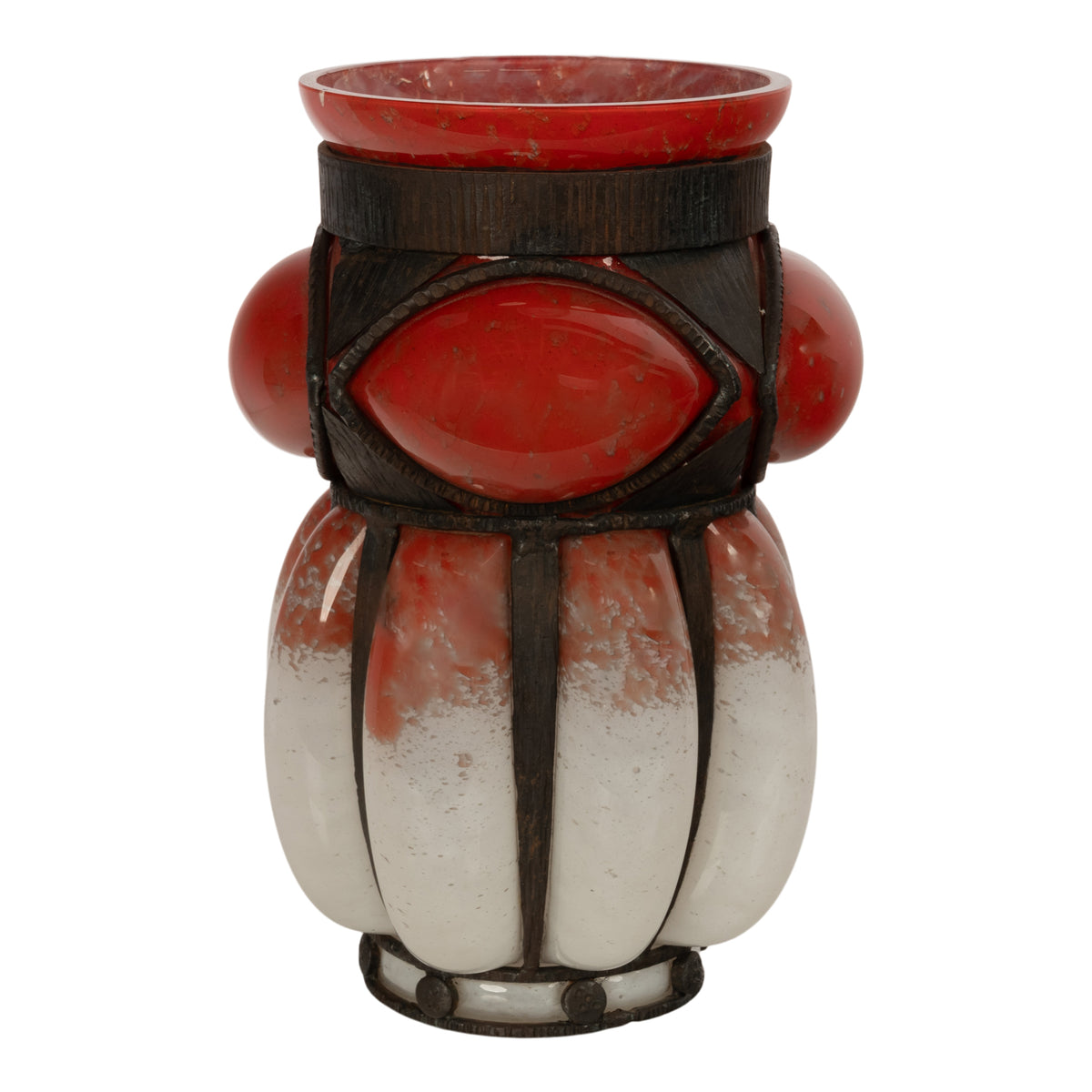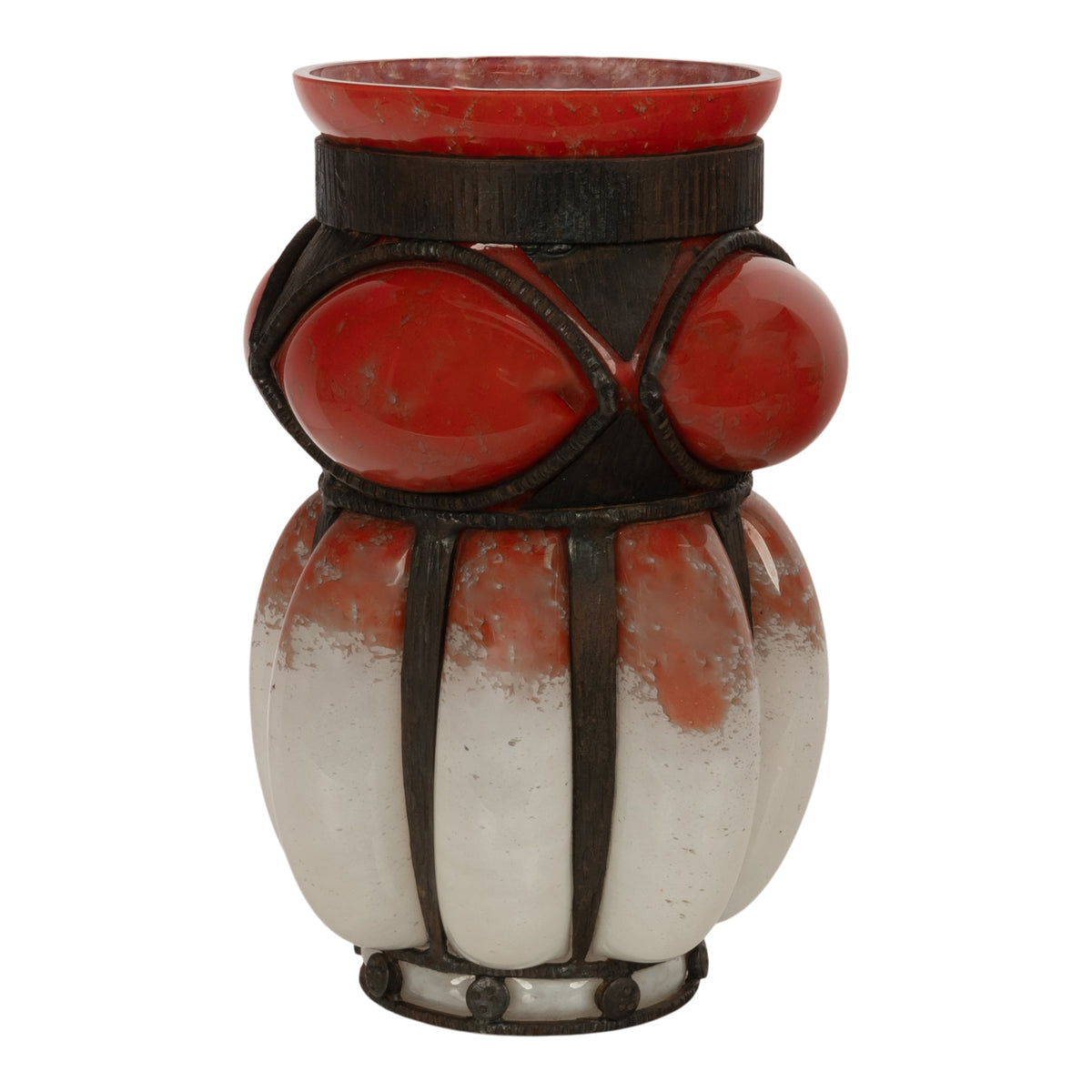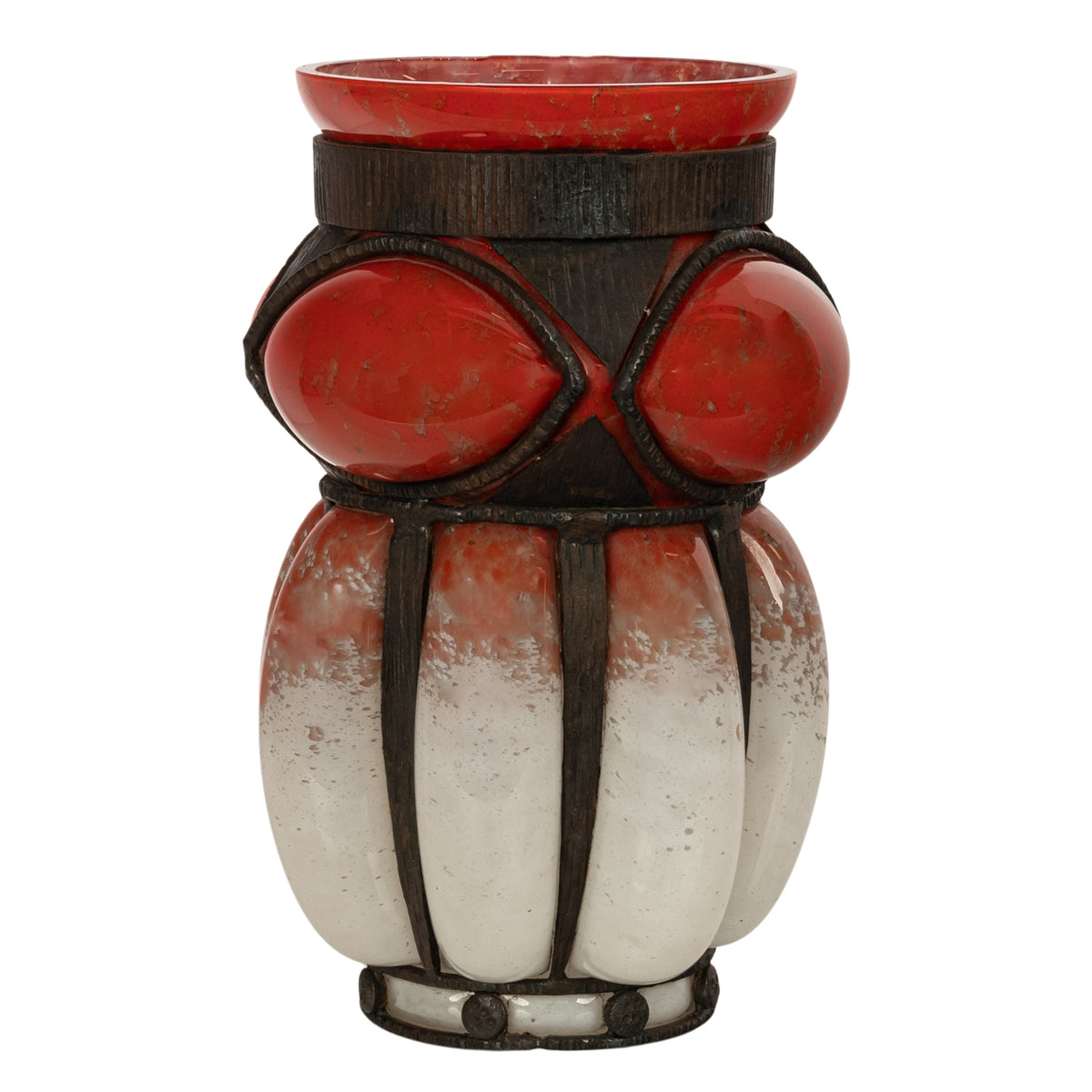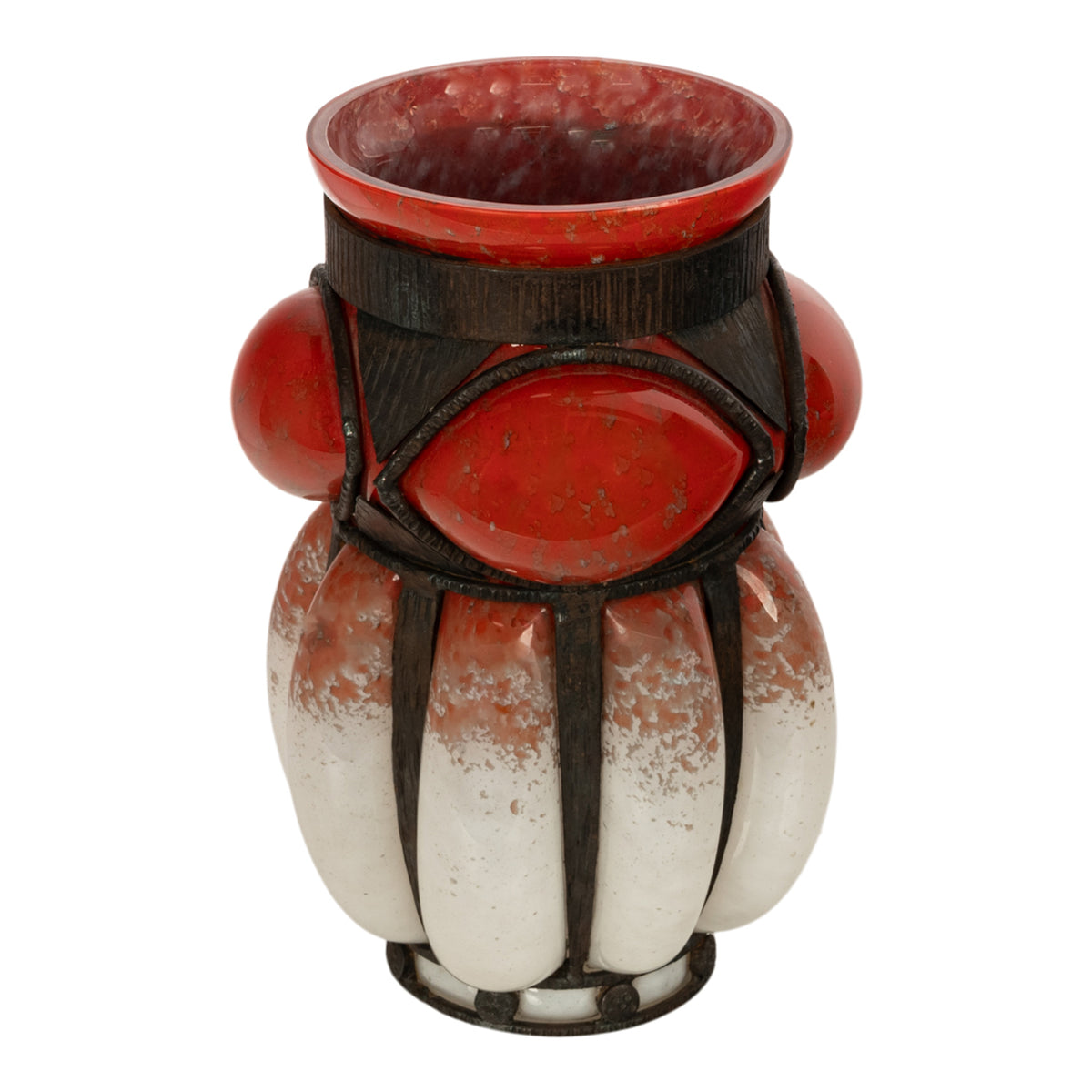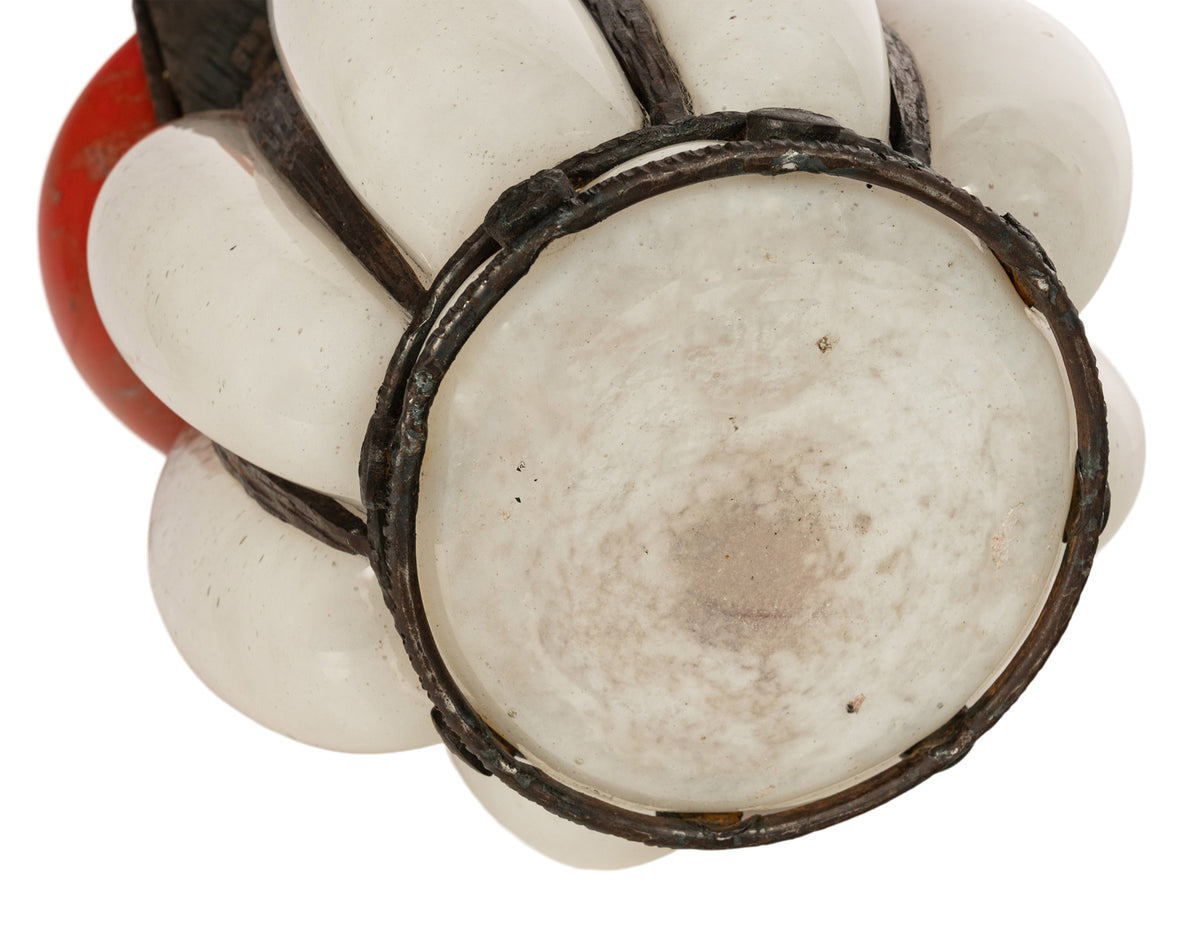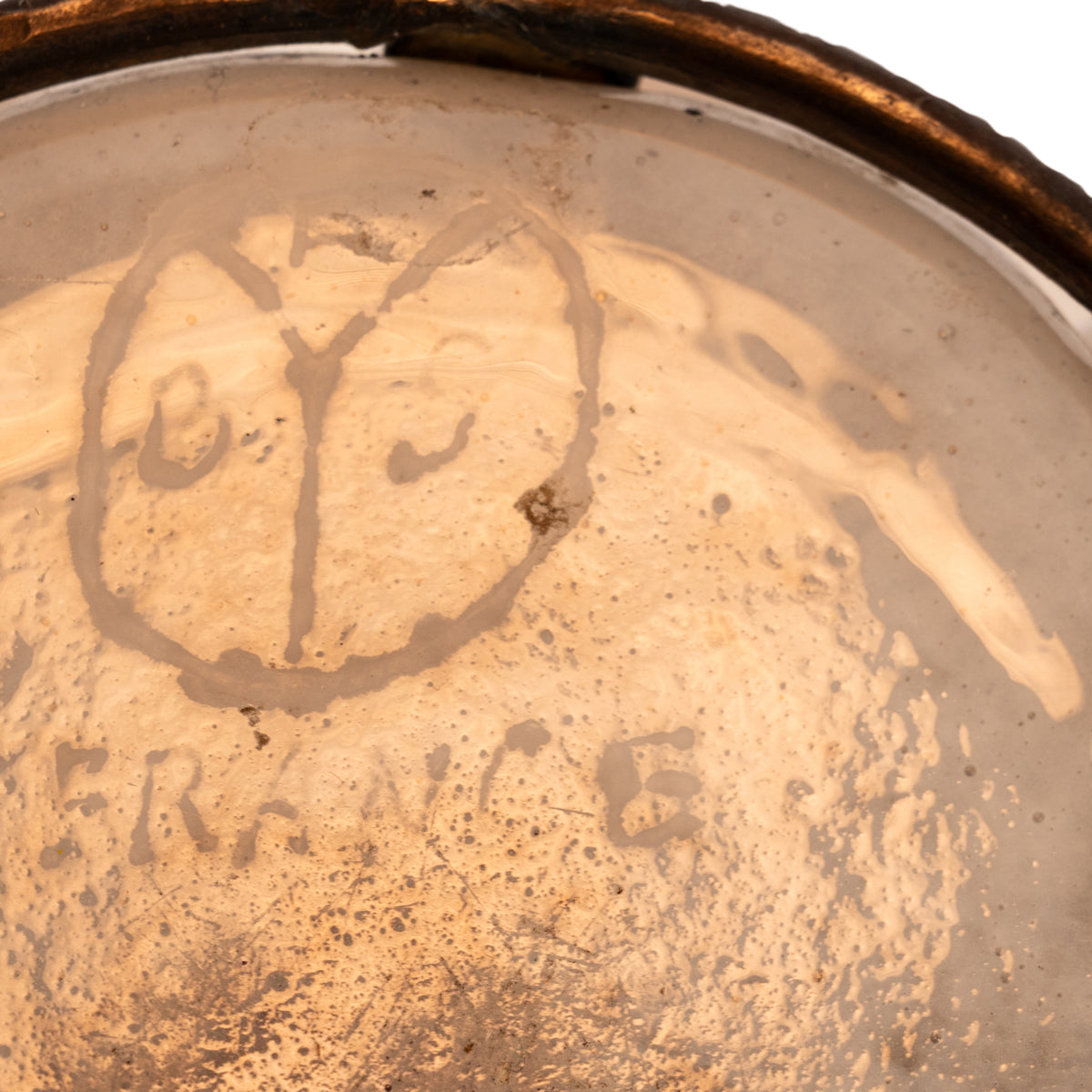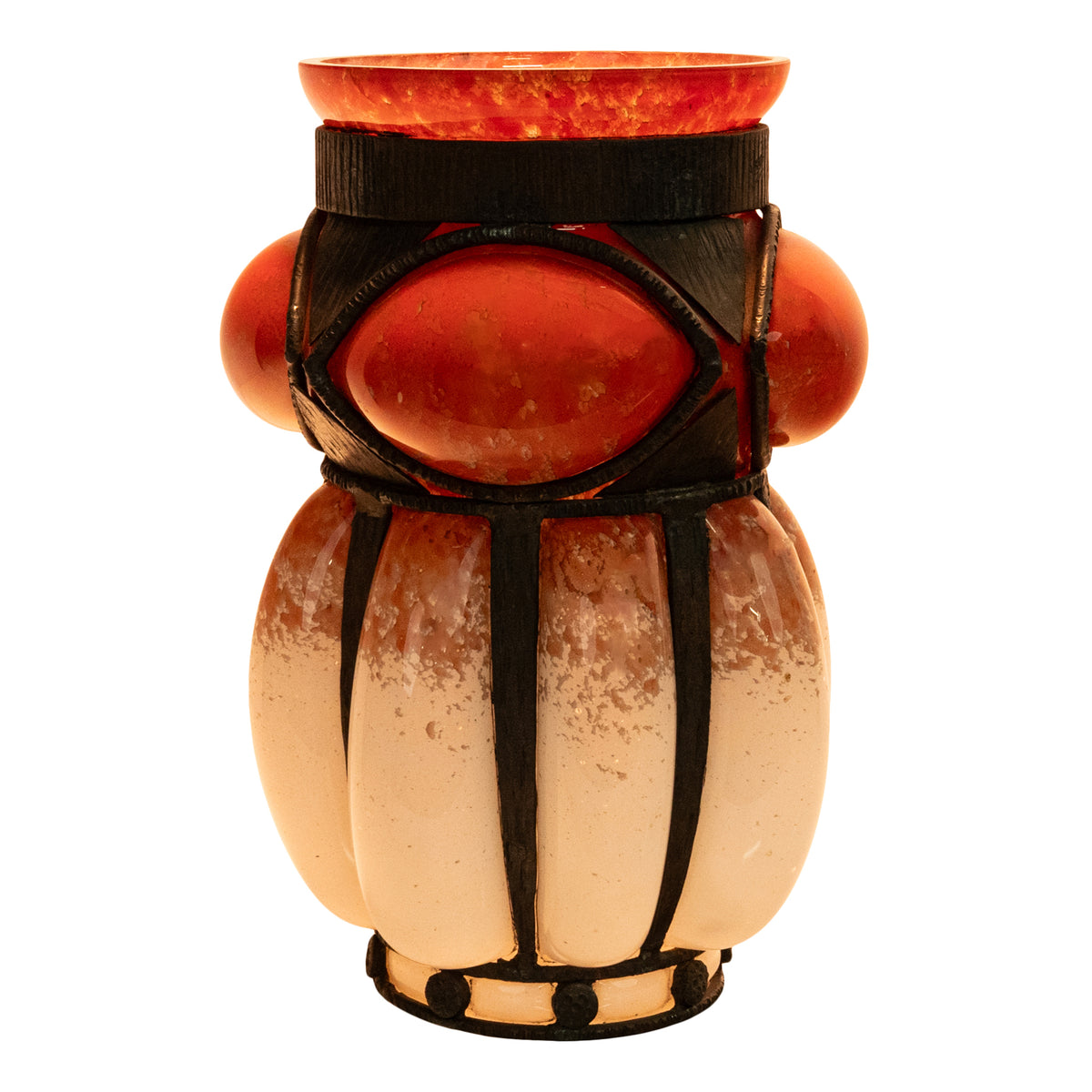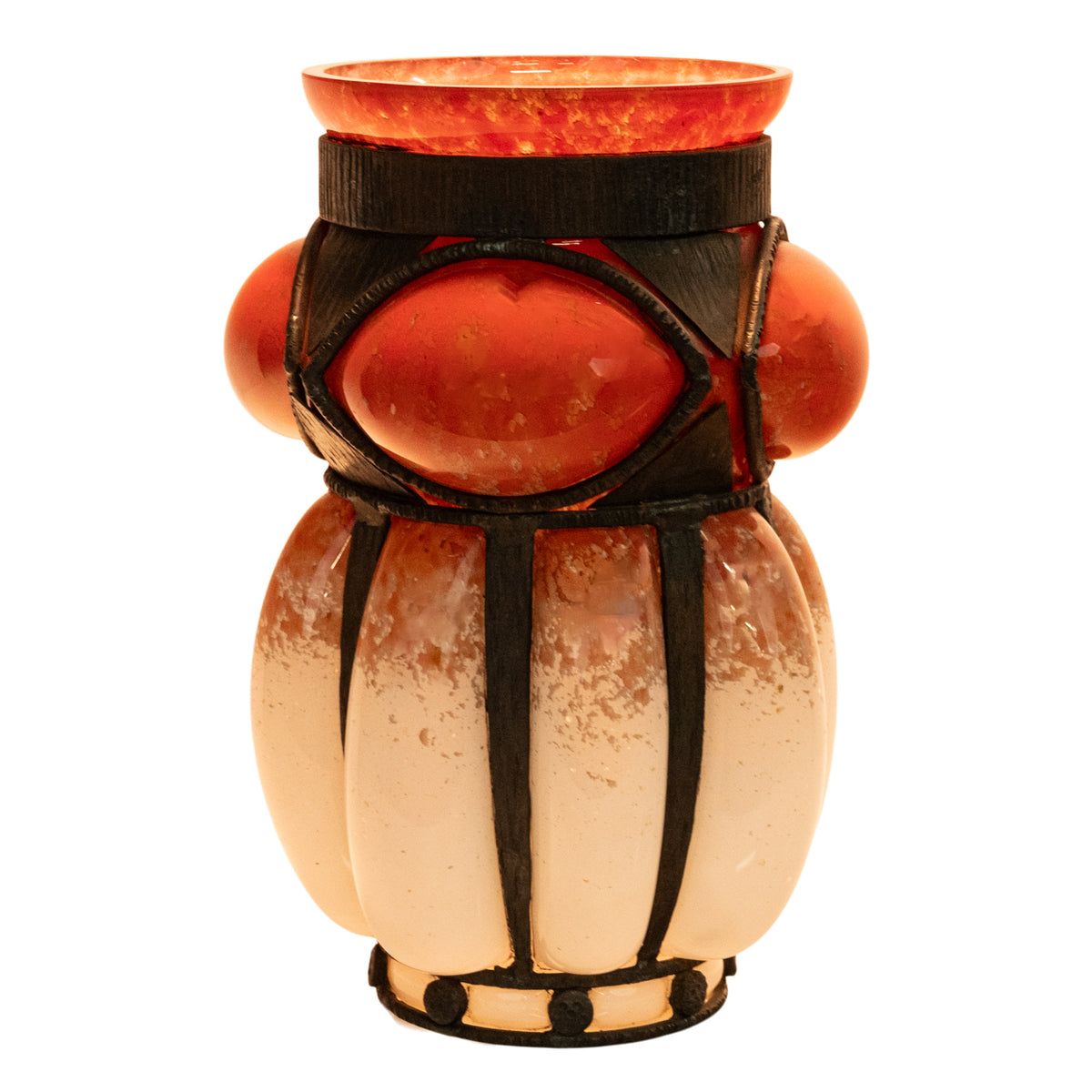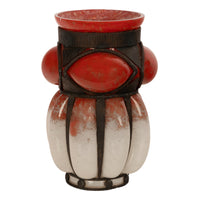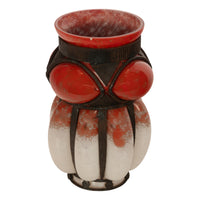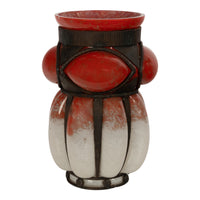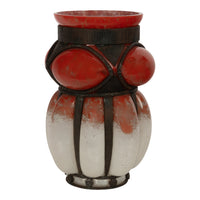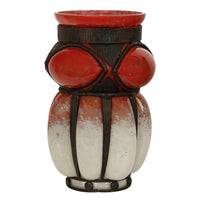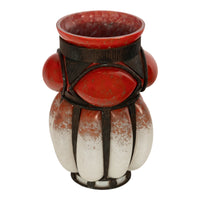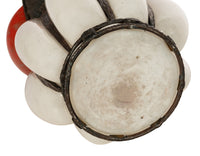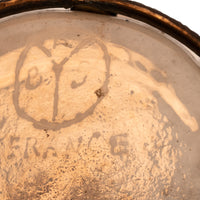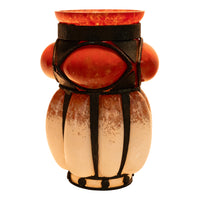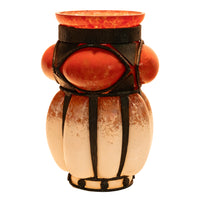Antique French Art Deco Glass & Iron Vase Charles Schneider Edgar Brandt 1920
- Regular
- $ 2,595
- Sale
- $ 2,595
- Regular
- Unit Price
- per
A very good large antique Art Deco French Art Glass vase, by Charles Schneider & ironwork by Edgar Brandt, circa 1920.
The glass vase was blown into a hand-forged iron armature, the flared top of a mottled red color with four bulbous elliptical shapes blown through the iron armature, the base having fluted iron with mottled ivory glass showing through, the vase is raised upon a circular foot bound with wrought iron with small iron disc decoration, the vase having an etched signature to the underside for Charles Schneider, France. the vase and iron work are in excellent condition, this wonderful vase exemplifies the age of jazz and the Art Deco aesthetic and as a result of a co-operation of two of the most important French designers of the Art Deco period, Charles Schneider & Edgar Brandt, please see their biography below.
Ernest and Charles Schneider grew up in Nancy, France. In 1903, Ernest Schneider (1877-1937) was hired by the sales department of the Daum frères factory . He got his younger brother Charles, who had trained as a sculptor at the School of Fine Arts in Nancy and then in Paris, to propose projects for vases and glass pastes. This collaboration continued until 1911. They founded their own company, Verreries Schneider , in Épinay-sur-Seine in 1913. The company's success was confirmed after the end of hostilities in 1918. It had up to five hundred employees in 1925 and sold its creations all over the world.
After 1918, the first pieces with enamel decoration of flowers and landscapes took up the studies drawn before the war as well as those of his friend Gaston Hoffmann . However, Charles Schneider quickly became the sole creator of the pieces. Gradually moving away from Art Nouveau , he developed a very personal genre, characterized by bright, powerful, contrasting colors and naturalistic and stylized motifs, perfectly symbolizing the Art Deco style of the interwar period 2 .
The company produced under two brands, Le Verre français and the Schneider line . The first is intended to be more accessible with 17 variations of shades compared to 32 at Schneider. It causes a sensation with its "butterfly" decoration created around 1925 representing red and blue insects on an azure cloudy background. It uses complex techniques such as bubble glass . Some productions are signed "Charder", an abbreviation of Charles Schneider.
The glass market was, however, seriously affected by the Great Depression of 1929 and led the Schneider brothers' company to bankruptcy in 1938 .
The Charder manufacturing brand : Le Verre français was the largest art glass-works in Europe in the 1920s and 1930s. A large majority of its creations, very much influenced by the Nancy school, are by Charles Schneider.
Edgar Brandt (1880-1960) was a French iron-worker, silversmith and designer, undertaking special commissions for the French embassy in Belgium, the stairs in the Louvre Paris and the balcony railing for The Grand Theater in Nancy France. In the early 1920s he was very much in demand for lighting, gates, and decorative radiator covers in the Art Deco style, he was acknowledged by the American associates of Architects in 1929, making him an honorary member.
After seeing the work of the Art Nouveau designer Louis Majorelle, Brandt had started his own furniture design. During the Art Deco period he cooperated with many other companies at the forefront of this new design style, including; Schneider, Daum & Favier and the sculptor Max Blondat.
Imperial
ches high × ches wide × ches deep
Metric
high × wide x deep
Displayed rates are for shipping in the Continental U.S. and Canada. For other locations, kindly contact us and we will provide the most competitive shipping price available. All shipments are professionally packed and shipped insured with full tracking capabilities. Customers are also welcome to collect their items from our warehouses or arrange their own shipping.

